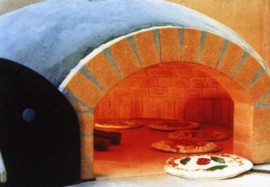Hello all,
This is my first post.
I am currently making a brick oven which will be a igloo style. I have already built the foundation slab and cinder block walls. I am at the hearth construction stage and I have a few questions.
- Why can't the hearth be constructed with reinforced rebar portland cement layed with firebrick ontop? Does the cement itself absolutley need to be insulated?
Once I complete that stage, I am on to the dome construction. Now I love the look of the brick style, but I love even more the convenience of modular precast refactory concrete molds. I intend to precast 6 section molds of the dome, including flu and mortar them together. Then I will cover the dome with a ceramic blanket and lay normal red brick ontop.
Is this a crazy idea? Am I nuts to think that this is more convenient? Can this idea work?
This is my first post.
I am currently making a brick oven which will be a igloo style. I have already built the foundation slab and cinder block walls. I am at the hearth construction stage and I have a few questions.
- Why can't the hearth be constructed with reinforced rebar portland cement layed with firebrick ontop? Does the cement itself absolutley need to be insulated?
Once I complete that stage, I am on to the dome construction. Now I love the look of the brick style, but I love even more the convenience of modular precast refactory concrete molds. I intend to precast 6 section molds of the dome, including flu and mortar them together. Then I will cover the dome with a ceramic blanket and lay normal red brick ontop.
Is this a crazy idea? Am I nuts to think that this is more convenient? Can this idea work?








Comment